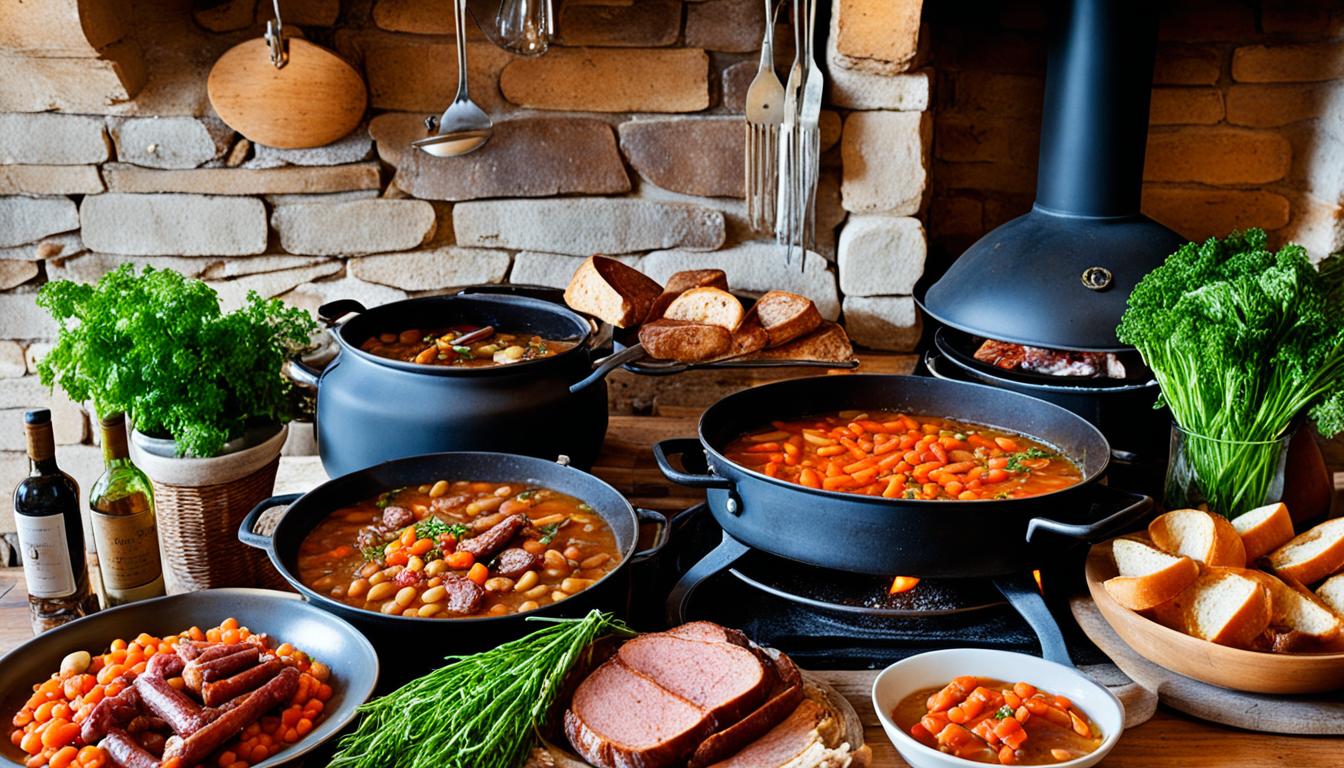Are you ready to indulge in the classic French comfort food that has stood the test of time? Say hello to the authentic traditional French cassoulet recipe – a beloved dish that will transport you to the cozy streets of France. But what truly makes this classic cassoulet dish so special? Is it the rich flavors, the hearty ingredients, or the dedication to preserving culinary traditions?
How to Make Cassoulet from Scratch
Making cassoulet from scratch may require some time and effort, but the process is relatively straightforward. Here’s a step-by-step guide to creating a hearty cassoulet recipe that stays true to its traditional peasant dish roots.
- Brown the meats: In a Dutch oven or heavy-bottomed saucepan, brown Italian pork sausages and chicken breasts until golden. Remove them from the pot and set them aside.
- Sauté the aromatics: In the same pot, sauté chopped onions, carrots, leeks, shallots, and garlic in the residual fat from the sausages until softened and fragrant.
- Deglaze the pot: Deglaze the pot with white wine, scraping off any brown bits from the bottom to incorporate their flavors into the dish.
- Return the meats: Return the sausages and chicken to the pot, adding cannellini beans, dried rosemary, herbes de Provence, and water.
- Simmer and bake: Bring the mixture to a simmer, then cover the pot and transfer it to the oven to bake for 2 hours, allowing all the flavors to meld together.
- Garnish and serve: Once cooked, garnish the cassoulet with fresh parsley for a pop of color and serve it piping hot.
This traditional cassoulet recipe can be refrigerated for up to 4 days or frozen for up to 3 months, allowing the flavors to develop even further over time. It’s a delicious and satisfying dish that captures the essence of a classic French comfort food.
The Controversy and Variations of Cassoulet
Cassoulet, being an iconic French dish, has variations and controversies surrounding its origins and ingredients. It is said to have Moorish roots, though the exact origin is uncertain. Different regions in France, such as Castelnaudary, Carcassonne, and Toulouse, claim their own versions of the “authentic” cassoulet. Castelnaudary is known for its simplicity, using beans, fresh pork, ham, sausages, and fried pork skins. Carcassonne adds lamb and sometimes partridges to the mix, while Toulouse incorporates lamb, bacon, sausage, and goose confit.
However, despite the debates, cassoulet is ultimately a dish that can be made in one’s own fashion, using ingredients readily available. Whether you choose to use white kidney beans, traditional tarbais beans, or opt for chicken instead of duck, each version of cassoulet can be a delicious and satisfying experience. The slow-cooked bean stew captures the essence of iconic French cuisine and showcases the versatility of this traditional French cassoulet recipe.
So don’t be afraid to experiment and put your own twist on this beloved dish. The beauty of cassoulet lies in its ability to adapt to personal tastes and regional influences. Whether you stick to a classic recipe or add your own creative touches, cassoulet will always remain a timeless favorite in the world of French cuisine.
